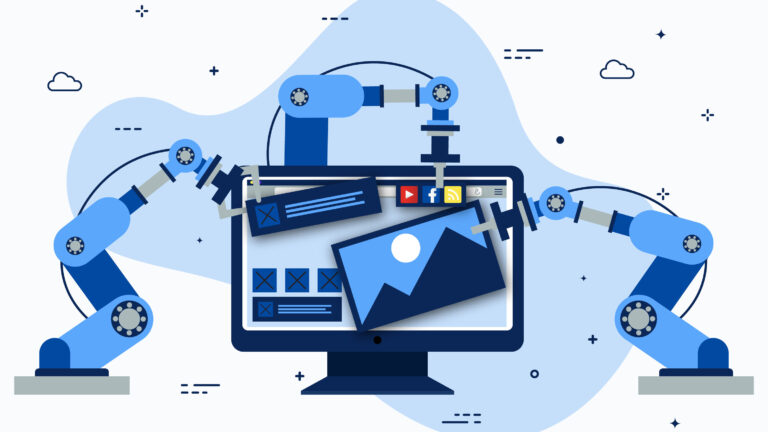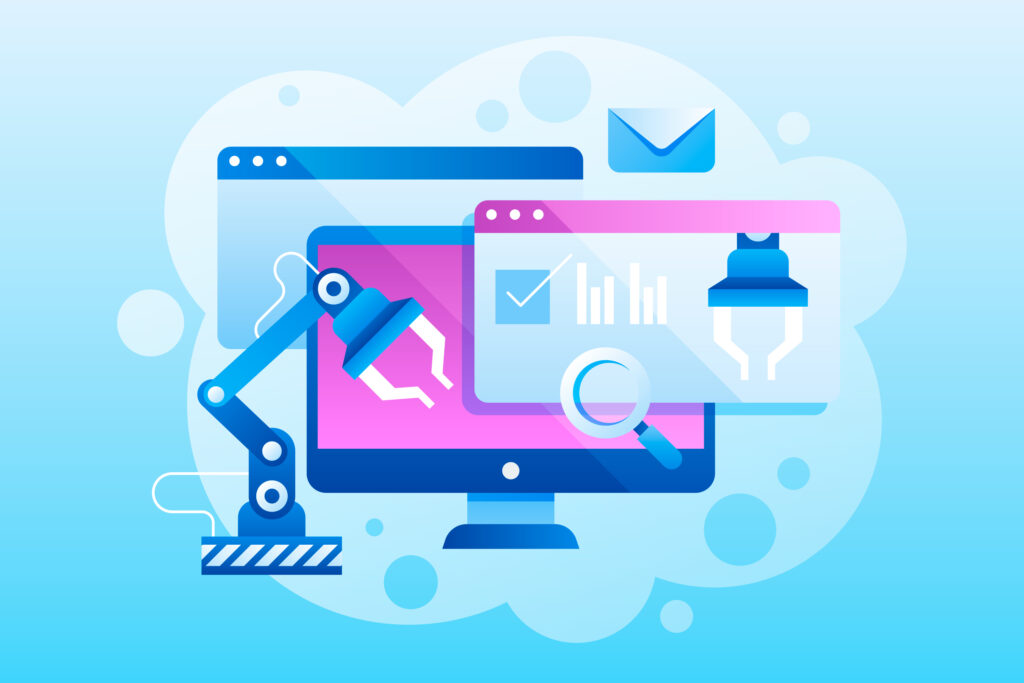Artificial intelligence is changing how businesses connect with people. Think of it like a smart assistant that helps you get your message out to the right audience, at the right time. Using AI tools for marketing can save you time, spark new ideas, and help your campaigns perform better than ever.
However, just having these tools isn’t enough. You need to know how to use them correctly. Jumping in without a plan can lead to confusing messages or wasted effort. We’ll explore the essential do’s and don’ts to help you navigate this new landscape. Understanding these rules will help you find the best AI tools for marketing and use them to achieve real success.
This guide will break down the practical steps you should take and the common pitfalls you should avoid. We’ll cover everything from setting clear goals to keeping your brand’s unique voice alive.

The Big “Do’s” of AI in Marketing
Using AI effectively means being strategic. Follow these best practices to get the most out of your efforts and turn powerful technology into a true asset for your marketing team.
Do: Set Clear Goals and KPIs
Before you even start looking at different AI tools, you need to know what you want to achieve. Are you trying to get more people to visit your website? Do you want to sell more products? Or maybe you want to create better content faster.
Setting specific goals is crucial. These goals will guide your strategy and help you measure what’s working. Key Performance Indicators (KPIs) are the specific numbers you’ll track to see if you’re hitting those goals.
For example, your goals and KPIs might look like this:
- Goal: Increase website traffic.
- KPI: A 20% increase in unique monthly visitors.
- Goal: Improve email engagement.
- KPI: Boost email open rates by 5% and click-through rates by 3%.
- Goal: Generate more leads.
- KPI: Capture 100 new qualified leads per month through AI-powered forms.
Having clear targets makes it easier to choose the right AI tools for digital marketing that fit your specific needs.
Do: Start Small and Scale Up
The world of AI is vast and can feel overwhelming. Don’t try to change your entire marketing strategy overnight. Instead, start with one or two small, specific tasks.
Pick an area where you face a clear challenge. For instance, if you struggle with writing social media captions, find an AI tool designed for that. Use it, learn from it, and measure the results.
Once you feel comfortable and see positive outcomes, you can gradually expand. This approach lets you learn without taking big risks. It also helps you prove the value of AI to your team or company before making a larger investment.
Do: Personalize the Customer Experience
One of the greatest strengths of AI is its ability to analyze massive amounts of data to understand customer behavior. You can use this power to make every customer feel seen and valued.
Use AI to:
- Recommend Products: Suggest items based on a customer’s past purchases and browsing history.
- Tailor Content: Show blog posts or send emails that match a user’s interests.
- Customize Website Experiences: Change the content on your homepage for different visitors.
Personalization makes people feel more connected to your brand. It shows that you understand their needs, which can lead to greater loyalty and more sales. This is a key feature to look for in the best AI tools for marketing.
Do: Maintain Your Brand Voice
AI tools are fantastic for generating ideas and first drafts, but they don’t know your brand like you do. Your brand’s voice is its personality, it’s what makes you unique and recognizable. It could be funny, formal, inspiring, or quirky.
Always review and edit AI-generated content. Make sure the tone, style, and language align perfectly with your brand identity. An AI might write a technically perfect sentence, but it might lack the specific flair that your audience loves. Think of AI as a creative partner, not a replacement for your own judgment and expertise.
(Internal Link Suggestion: Place a link here to a blog post about “How to Develop a Strong Brand Voice.”)
Do: Continuously Test and Optimize
Marketing is never “one and done.” What works today might not work tomorrow. AI tools can help you run tests more efficiently. You can A/B test different email subject lines, ad headlines, or landing page designs to see what resonates most with your audience.
Use AI analytics to track performance in real time. If a campaign isn’t meeting its KPIs, the data will show you why. This allows you to make quick adjustments to improve your results. This cycle of testing, learning, and optimizing is what leads to long-term marketing success.

The Major “Don’ts” of AI in Marketing
While AI offers incredible opportunities, there are also potential traps. Avoiding these common mistakes is just as important as following the best practices. Here’s what you should steer clear of.
Don’t: Rely on AI for Final Decisions
AI can provide data, predictions, and suggestions, but it lacks human intuition and ethical judgment. Strategic decisions should always be made by people.
For example, an AI might suggest a pricing strategy that maximizes profit but could damage your brand’s reputation. It might identify a target audience that is ethically questionable to market to.
Use AI as a powerful advisor. Let it handle the data analysis and number crunching, but reserve the final say for your team. Human oversight is essential for responsible and effective marketing. Many AI tools for marketers are designed to support, not replace, human expertise.
Don’t: Ignore Data Privacy and Ethics
Customers are increasingly concerned about how their data is used. When you use AI, you are often handling large amounts of personal information. It’s your responsibility to protect it.
Always be transparent about what data you are collecting and how you are using it. Comply with regulations like GDPR and CCPA. Never use data in a way that could be seen as intrusive or manipulative. Building and maintaining trust with your audience is more valuable than any short-term gain from misusing data.
Don’t: Use AI-Generated Content Without Review
This point is so important it’s worth repeating. Never copy and paste content directly from an AI tool and publish it. This is a recipe for disaster.
AI-generated content can sometimes be:
- Factually incorrect: AI models can “hallucinate” and make up facts or statistics.
- Generic and boring: It might lack the emotion and personality that engages readers.
- Out of date: The AI’s knowledge may not include the latest trends or events.
- Plagiarized: In rare cases, it might produce text that is too similar to its training data.
Always have a human review, edit, and fact-check everything. Add your own insights, examples, and stories to make the content truly yours.
Don’t: Forget the Human Touch
Technology can make marketing more efficient, but it should never make it feel robotic. People connect with people, not algorithms. Your marketing should always feel personal and authentic.
Encourage real conversations on social media instead of just using automated replies. Write email newsletters that share genuine stories from your team. Use AI to handle repetitive tasks so you have more time for creative strategy and building real relationships with your customers.
(Internal Link Suggestion: Place a link here to a blog post about “The Importance of Human-Centered Marketing.”)
Don’t: Assume Free Tools Are Always the Best Option
There are many amazing free AI tools for marketing available. They can be a great way to experiment and learn without any financial commitment. However, “free” often comes with limitations.
Free versions may have restrictions on:
- The number of uses per month.
- Access to advanced features.
- The quality of the output.
- Customer support.
As your needs grow, you may find that investing in a paid tool provides a much better return. Paid tools often offer more power, better integrations, and the support you need to scale your efforts effectively. Evaluate both free and paid options based on your goals and budget.
How to Choose the Best AI Tools for Marketing
With so many options available, finding the right tools can be a challenge. The best AI tools for marketing are the ones that align with your specific goals.
Identify Your Biggest Needs
Start by pinpointing your pain points. Do you spend too much time writing drafts? Are you struggling to analyze campaign data? Make a list of tasks that are time-consuming or difficult.
Research and Compare
Look for tools that specialize in solving your specific problems. Read reviews, compare features, and look at case studies. Many tools offer free trials, which are a great way to test them out before you commit.
Consider Integration
The best tools work well with the other software you already use. Check if the AI tool can integrate with your email platform, CRM, or social media scheduler. Good integration creates a smooth workflow and saves you from manually moving data between systems.
Conclusion: Your Path to AI-Powered Success
Using AI tools for marketing is no longer a futuristic concept, it’s a practical strategy for growth. By following the “do’s,” like setting clear goals and personalizing content, you can unlock incredible efficiency and creativity. By avoiding the “don’ts,” such as ignoring data privacy and forgetting the human touch, you can build a strategy that is both effective and trustworthy.
The key is to approach AI as a powerful assistant, not a magic solution. It requires human strategy, oversight, and creativity to truly shine. Start small, learn continuously, and always keep your audience at the heart of everything you do. When used thoughtfully, the best AI tools for marketing will not only improve your campaigns but also free you up to focus on what truly matters: building meaningful connections with your customers.



